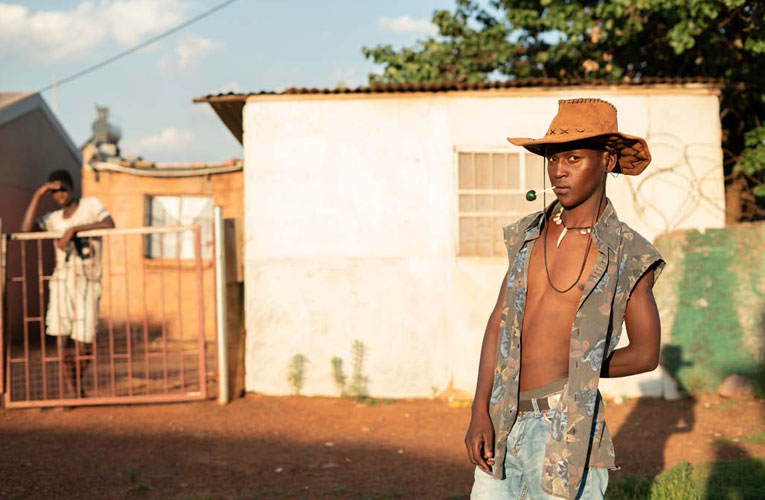Inganekwane exhibition is a photographic journey through violence wracked Khumalo Street of the 1990s
By Teboho Ralesai
There is currently an impressive body of photographic work created by 16 photographers that have been guided through the process by mentors. The exhibition titled Inganekwane opened on October and is running until November 27, 2021 at Constitution Hill, and is presented by by the organisation Of Soul and Joy. Of Soul and Joy is a social art initiative undertaken in 2012 by Rubis Mécénat and Easigas in Thokoza, a township in the southeast of Johannesburg in South Africa.
Its goal is to develop artistic skills in the field of photography amongst the township’s vulnerable youth by providing an understanding of photography as a means of expression, in order to open new personal and professional horizons. As a creative platform, Of Soul and Joy offers weekly workshops led by renowned photographers, encounters with art professionals, collaborations with cultural institutions and organizes artistic events in Africa and abroad.

December 2020 and May 2021.
During this period, learners have selected their own relevant theme and objectives of the project which has been met through mentorship, curatorial input, and weekly photographic workshops.
Inganekwane is a Nguni word which means story telling, fable or creation of history through narrative performance. This exhibition aims to explore Khumalo Street as a site of memory where the communities collective knowledge can be shared, performed and archived. It’s through this elaborative memory disposition by which the interconnection between narrative and history can be established. Khumalo street is an arterial street that experienced a wave of transitional violence between 1991 and 1994.

The violence emerged as a result of conflict of ideologies between hostel dwellers who were politically aligned to the Inkatha Freedom Party and broader township residents who were aligned to the African National Congress. The violence persisted for three years with 3000 people being killed. It was during the Truth and Reconciliation Commission that the complexities of understanding the reason that led to the violent period emerged. The elements of comrade criminality and suspicion of state sanctioned violence has created shifting social realities on what transpired.

The exhibition brings together works from Of Soul and Joy students who grew up in the community where the violence has been localised. The project aims to interrogate personal histories and the continuity of the trauma as a generational experience. It’s through this social mapping that the students’ work intersect the collective memory and private memory.
By participating in the collective narrative, the Of Soul and Joy students and mentors provides documentary photographs that are subjectively representational and cannot be viewed as facts but merge the present with the past.
The following are the participating photographers: Sibusiso Bheka, Simphiwe Fuwe Molefe, Thembikosi Hlatshwayo, Litha Kanda, Vuyo Mabheka, Sikelela Mdilikwana, Lerato Maphoto, Lunathi Mngxuma, Xolani Ngubeni, Thobeka Nzwana, Sibusiso Sithonga, Simphiwe Vilakazi, Lunathi Mngxuma, Sibusiso Bheka and Thobeka Nzwana
Mentors
These emerging photographers were mentored by Jabulani Dhlamini, Sabelo Mlangeni, Andrew Tshabangu and Thandile Zwelibanzi.The exhibition is open to the public and can be viewed for free from 9am to 5pm at Constitution Hill 11 Kotze St, Braamfontein, Johannesburg.










